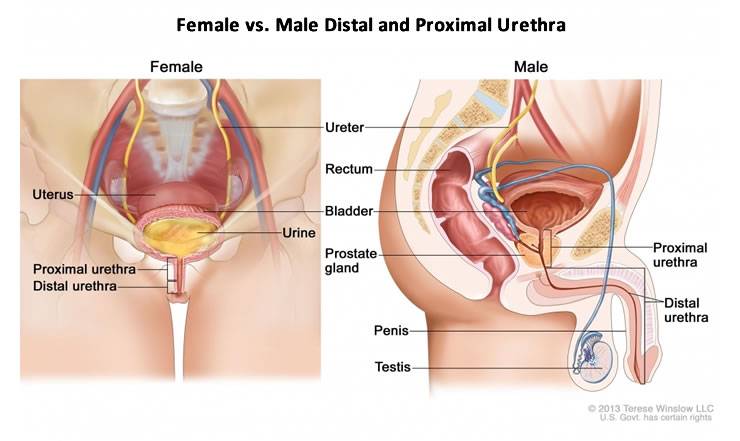FtM Bottom Surgery- Types Of Surgery Involved And What To Expect!
FtM bottom surgery or Female to male bottom surgery as the name suggests is a type of sex reassignment surgery. This is also sometimes referred to as gender-affirming surgery or gender affirmation surgery.
This surgery might be performed in various forms which include removing the breast known as “mastectomy” and altering the genital area called “bottom surgery”.
Some examples of FtM bottom surgery include:
- Removal of the uterus, called Hysterectomy.
- Removing vagina, called Vaginetomy.
- Constructing a penis through phalloplasty or metoidioplasty.
If you are interested in knowing what FtM bottom surgery is , the type of surgeries involved under this class, the recovery process, and what to expect after the surgery, here is all you need to know.
Overview
Transgender and intersex individuals pursue many diverse paths to discern their gender definition.
Some people do nothing at all and like to keep their gender identification and character private. Some want social development— informing others about gender status without medicinal intervention. FtM bottom surgery as already stated above involves a lot of different surgeries.
Vaginoplasty is generally proceeded by transgender women and non-binary people who are indicated male at birth, while another type, metoidioplasty or phalloplasty is generally taken by transgender men and non-binary people who are assigned female at birth.
FtM Bottom Surgery

Before undergoing FtM surgery, a person is suggested to receive testosterone replacement therapy. Once this is done, they are then allowed to undergo any one or more than one procedures which is described below.
1. Chest Restructuring
A person undergoing FtM bottom surgery to make a transition from female to male generally has the subcutaneous mastectomy for removing their breast tissue. During this procedure, the surgeons also make certain changes regarding the positioning of their nipples and how they appear. Meanwhile, the testosterone therapy they had undergone will give rise to chest hair growth for appearance.
2. Removal of ovaries, fallopian tubes, and uterus
A person willing to undergo FtM bottom surgery can decide if they want the surgeons to perform this step or not. If the hormone therapy they had undergone does not help in stopping their menstruation cycle, or they are simply willing to remove Fallopian tubes, ovaries, and uterus, they can ask the surgeons.
When a partial hysterectomy is performed, the surgeon only removes their uterus and not Fallopian tubes and ovaries. When a total hysterectomy is performed, the cervix is also removed along with the uterus.
Another procedure called BSO or Bilateral Salpingo oophorectomy is performed which involves removal of left and right Fallopian tubes along with ovaries.
3. Metoidioplasty
This procedure in FtM bottom surgery involves constructing a neopenis or a new penis.
It includes replacing the clitoris of a female to form a penis. A person will obtain hormone therapy ere the surgical procedure to expand the clitoris for the aforementioned purpose.
During this procedure, the surgeon will also remove the vagina, in the procedure called vaginectomy.
In addition to this, they extend the size of the urethra and locate it through a new penis or neopenis formed. To complete the lengthening, the surgeon or specialist involved will use tissue from their cheek, labia minora, or different sections of the vagina. The purpose of this is to let the person urinate in a standing position.
Another alternative is a Centurion procedure, which includes repositioning round ligaments beneath the clitoris to enlarge the circumference of the penis.
The procedure of metoidioplasty will last typically for about 2 to 5 hours. Once the initial surgery is over, some additional procedures might be needed. The centurion procedure mentioned with it will take nearly 2 to 3 hours. Removing the reproductive organs in females will also add to this time.
A benefit of getting metoidioplasty done is that the new penis formed might become erect similar to the erectile abilities of the clitoris tissue.
However, the new penis formed is mostly too small to become erect for sexual penetration.
4. Phalloplasty

This procedure often takes use of grafted skin- generally from the thigh, back, arm, or abdominal region for the formation of neopenis or new penis in Ftm bottom surgery. Surgeons consider taking skin from the forearm to be the most reliable option in new penis construction.
Compared to the previous procedure, which is medioplasty, this procedure results in the formation of a larger penis. However, the new penis formed will not become erect by itself. After the recovery is complete, a person might need a penile implant. This allows the person willing to get and maintain erections and have sex penetrative in nature.
During this procedure, the surgeons will perform vaginectomy and lengthen the urethra for allowing the person to urinate through their newly formed penis.
Some disadvantages of this procedure include revisiting the doctor numerous times, as well as the cost of getting this done, which is higher than the metoidioplasty procedure.
5. Scrotoplasty
As the name suggests, this procedure is for those who want to have the scrotum created. S person might opt for scrotoplasty alongside phalloplasty or metoidioplasty procedures.
In this procedure, the surgeon will hollow out and reposition the labia major to create the scrotum and then insert a silicone testicular implant.
Recovery After A FtM bottom surgery

Now that you know about all the different types of surgeries involved in FTM bottoms surgery, it is important to know about the recovery process for a better understanding. The recovery phase from FtM bottom surgery differs based on the type of procedures you have undergone and factors like lifestyle choices and the overall health of a person.
For instance, smoking will slow down the time required for recovery and increase the risks of complications after these surgeries. If a person vapes, smokes or uses any substances having nicotine in them, the medical team might consider them less eligible or not eligible to undergo FtM bottom surgery.
Following this gender-affirming surgery, most people are required to stay in the hospital for a few days. After leaving the hospitals, they are required to rest and engage in limited activities for 6 weeks at least or longer based on what the surgeons have to say.
Also, if a person has had a urethral extension, they are required to use a catheter for 3 to 4 weeks.
There are a few complications in phalloplasty or metoidioplasty, these include:
- Urethral stricture is a type of growth that leads to blockage of the urine flow inside the urethra.
- Urethral fistula- This is a tunnelled connection that starts forming between the urethra and any other body part.
A person who has undergone phalloplasty procedure might experience:
- formation of scars in the region where the graft was used
- skin graft collapse or tissue death after the procedure
Some risks or side effects of performing scrotoplasty include rejection of the implants done.
All the gender-affirming surgeries might have a risk of the following:
- Reaction to given anaesthesia
- Dissatisfaction with the results they have received.
- Bleeding.
- Infection
What to expect after surgery

A person who experiences or undergoes a metoidioplasty surgery might get erections and experience more sensation in the new penis or neopenis. However, the new penis formed will be comparatively small in size.
A neopenis that forms from a phalloplasty surgical procedure is generally larger, though it might be less susceptible. To have erections, a person may require a penile implant.
If a person undergoes a urethral extension, the aim is to be capable to urinate in a standing position after a complete recovery from all procedures. A few studies have reported a high amount of urological difficulties and complications following phalloplasties surgeries.
It is necessary to attend routine follow-ups with the urologist after surgery. You can always ask the doctors about the time and duration of the follow-ups.
A study from 2005 including nearly 55 people who have undergone gender-affirming operation— involving 23 female-to-male members— records that 80% of these members reported: “advancement of their sexuality” after the surgery.
Transgender men managed to record more common masturbation with sexual satisfaction and excitement as compared to transgender women. They also proclaimed reaching orgasms more efficiently than they did before the surgery took place and drift toward “more compelling and shorter” orgasms.
Transgender men having penile implants for their erections endured pain more regularly through sex than people without penile implants. However, they have also stated that their expectations from sex were more adequately realised, matched with other participants who did not receive any implants.
A 2018 study discovered that 94–100% of total participants who had experienced or achieved gender-affirming surgery or FtM bottom surgery reported relief with their surgical outcomes, with the variation based on the kind of procedure.
The 6% of individuals who stated any dissatisfaction or disappointment after surgery did so as a consequence of preoperative psychological signs or complexities after the procedures.
Risks And Side Effects
Vaginoplasty can result in a lack of sensation in that part or all of the areas in the neo clitoris as a result of nerve damage. Some individuals might encounter a rectovaginal fistula, which is a severe predicament that exposes the intestines inside their vagina. Vaginal prolapse might also happen. Though, all of these problems are comparatively unusual complications.
More ordinarily, people who receive a vaginoplasty might undergo insignificant urinary incontinence, which is quite similar to what one encounters after giving childbirth. In several cases, such issues recede after some time.
Cost of FtM bottom surgery
The overall cost depends upon various factors including the number of surgeries you opt for, the experience of the surgeon involved, and the area you reside in. Here is the average cost of each surgery involved in FtM bottom surgery.
| Vaginoplasty | Cost runs from $10,000-$30,000 |
| Metoidioplasty | Cost runs from $6,000-$30,000 |
| Phalloplasty | Cost runs from $20,000-$50,000, or even reach as high as $150,000. |
The Bottom Line
The scope for female-to-male or FtM bottom surgery is based on the type of surgery performed, the person’s health status, and some other factors. Most people describe satisfaction after the procedures.
Nevertheless, the complexity rate in FtM bottom surgery is comparatively high, particularly concerning the person’s urinary health.
Hence, it is significant to work intimately with an expert plastic surgeon, gynaecologist, urologist, and mental health specialist to make sure of the best result after the surgeries.
It is also necessary to follow recovery instructions and visit all the follow-up appointments as stated by the expert.

